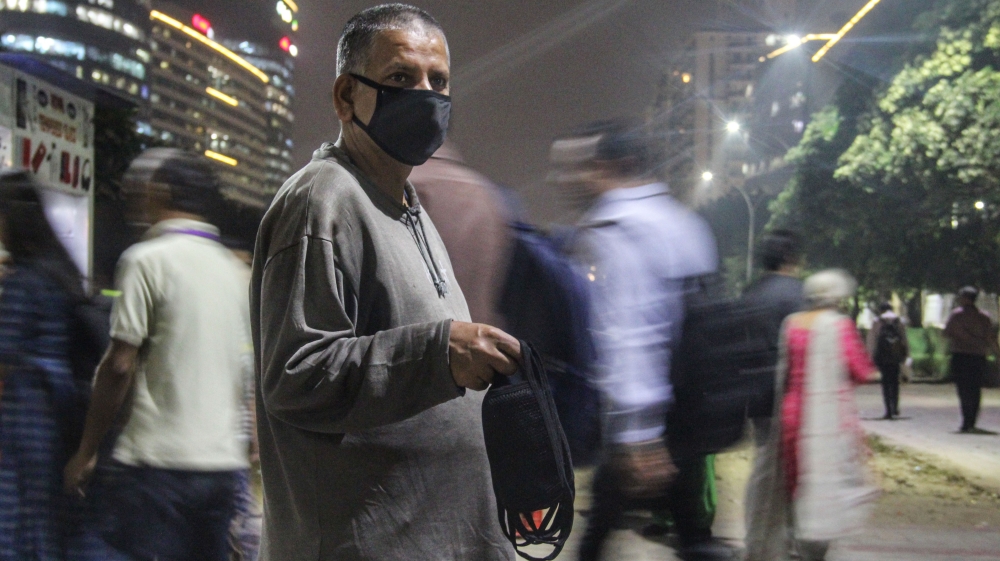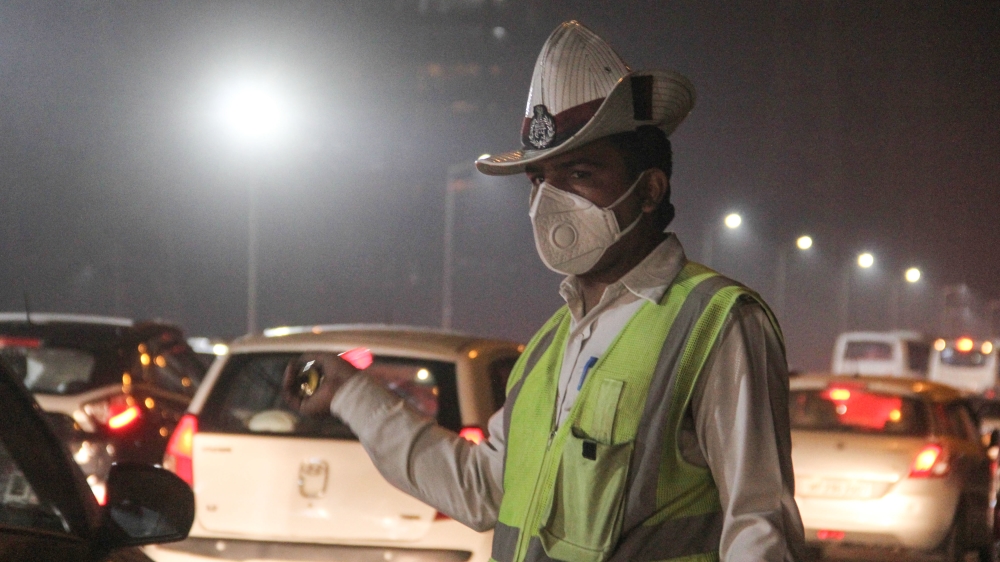India: Delhi pollution level deteriorates to ‘hazardous’ category
New Delhi, India – A blanket of smog greeted residents of New Delhi on Monday as air quality deteriorated sharply overnight in India‘s capital, triggering warnings that even healthy people were at risk of health problems.
The air quality index, that measures PM 2.5 tiny particulate matter that reaches deep into the lungs, more than doubled within a few hours to 707 on Monday morning at Mandir Marg, the worst affected area in the city, pollution monitoring agency AQICN data revealed.
This is double the mark of 300 that authorities deem as hazardous.
Suggestion to friends in Delhi. Today the air is incredibly toxic. Please remain indoors, wear a mask and install a filter if you can. Please ask elders to avoid outside exposure through morning walks. Take care.
— Apar Gupta (@apargupta84) November 5, 2018
The US embassy in New Delhi said its air pollution index had on Monday morning breached the “hazardous” level upper limit of 500, at which it stops measuring levels of PM2.5.
New Delhi, with a population of 16 million, ranks among the world’s most polluted cities.
The air quality in the Indian capital usually worsens at this time of year when crops burned in nearby states envelops the city. It is expected to worsen with smoke from firecrackers celebrating Diwali, the festival of lights, on November 7.
 |
| An Indian man sells face masks at the roadside amid heavy smog in New Delhi [Nasir Kachroo/NurPhoto/Getty Images] |
Doctors in New Delhi are sounding the alarm, warning people to avoid outdoor exertion.
“Such levels of pollution will shorten your lifespan. Today, we are talking of levels over 600, so 60 times over the normal level,” Dr Krishan Kumar Aggarwal, president of the Heart Care Foundation of India, told Al Jazeera.
“Everybody, including healthy people are impacted now. All sudden deaths and acute heart attacks during this period in the city should be linked to pollution.”
“PM 10 is harming our lungs and PM 2.5 and PM 1 is attacking every organ of our bodies,” the cardiologist warned.
“With an air purifier and an air conditioner indoors, still registering PM 2.5 levels over 300, so no place to turn to. It is an extreme situation. Why is there no emergency action from authorities? They mobilised the army when there was a flood in Kerala. Today, there is a flood in Delhi, a flood of pollution. This is a natural disaster of equal gravity,” he added.
While Delhi chokes, @narendramodi TL would make you think there’s an alternate reality that exists in the rarified air of 7 Lok Kalyan Marg – not a word fm the PM about the toxic fumes Delhi is inhaling
There’s a pollution crisis again. And its unforgivable – Mr. Prime Minister.
— barkha deva (@barkhad) November 5, 2018
A latest World Health Organization (WHO) report says India tops a list of countries that recorded high numbers of child deaths linked to air pollution in 2016.
At least 14 of the 20 most polluted cities of the world are in India, according to the WHO.
A senior environmental official said last week that the South Asian country may halt the use of private vehicles in New Delhi if air pollution gets worse.
New Delhi’s main pollutants are missions from vehicles and thermal power stations, as well as construction dust. Crop burning and industrial pollution from adjoining states also add to the bad air in New Delhi, say experts.
According to the Haryana Pollution Control Board, farmers in northern states like Punjab, Haryana and Rajasthan burn millions of tonnes of crop waste around October every year to clear farmland before sowing the winter crop.
An estimated 35 million tonnes are set afire in Punjab and Haryana every year, which contributes to the haze and smog in New Delhi.
Monday’s worsening air quality is despite some steps being taken to battle pollution since last month.
“This winter we have some advantages. Some pre-emptive actions have been taken in Delhi already. Since October authorities have shut down coal-powered plants, brick kilns and stone crushers and hot-mix plants. If it worsens, emergency action has to be stepped up,” Anumita Roychowdhury from the Centre for Science and Environment, a non-profit organisation, told Al Jazeera.
“This October did not breach severe levels, but November is going to be much tougher. We need disciplined implementation of a comprehensive action plan which has already been notified,” she added.
 |
| A policeman wearing a mask to protect himself from pollution in Delhi [Nasir Kachroo/NurPhoto/Getty Images] |
Last year, the Supreme Court temporarily banned the sale of firecrackers in and around New Delhi during the festival of Diwali sparking debate over the decision. It also outlawed the sale of luxury diesel vehicles and ordered a tax on trucks entering the city.
This year it declined to order a blanket ban on Diwali firecrackers.
But the grim health warnings are not likely to be heeded by everyone. For some residents of the city like Dilip, a 32-year old cleaner, there is no escape from breathing in the toxic air as he is forced to work outdoors.
“I cough a lot, my eyes are watering, I have had to go to the doctor twice this last week. I know the air is bad. But I can’t stay indoors, who will work and earn for me?” he asked.




